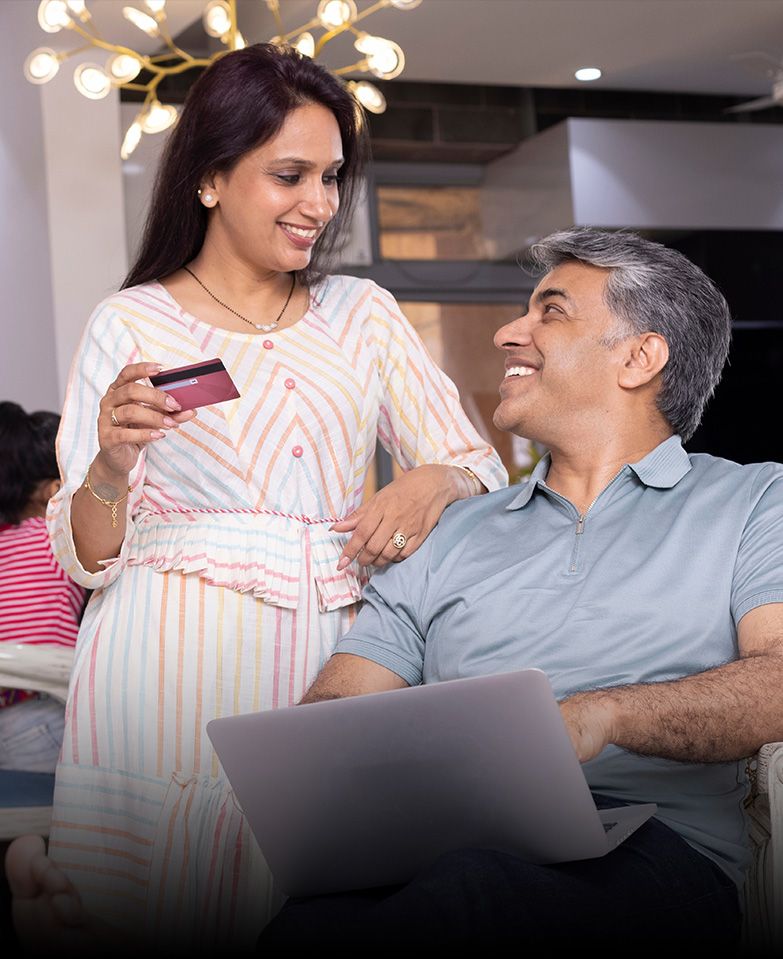
Credit Card CVV Number What Is It & How To Find It
Have you ever noticed a three-digit number on the back of your credit or debit card and wondered what it's for? Well, that's your CVV number or Card Verification Value. It's like a secret handshake between you and your bank, making sure that no one else can use your card for online shopping. It's a small number with a big job - keeping your money safe.
So, what do you need to know about your credit card CVV, and how can you find it online? Let's take a look and find out how this little number plays a big role in your online financial security.
What is a cvv number?
Before you start with the details, let’s understand what is CVV in ATM card (debit card) and credit card usage. The CVV, or Card Verification Value, is a three or four-digit number found on your credit or debit card. It's designed to add an extra level of security to transactions, particularly when shopping online or over the phone where the physical card is not seen by the seller.
The CVV is not embossed like your card number, and it's separate from your PIN (Personal Identification Number). When you enter the CVV during an online transaction, the merchant contacts the card issuer to check the CVV, confirming that the number provided matches the number on file. This helps to authenticate the transaction, reducing the risk of fraud.
In some cards, it's called CVV2, while in other cards, it's called CID (Card Identification Number). Different cards like the Dream Different credit card might have the CVV printed in different places, but it's always there as a security measure.
The CVV is not stored in the magnetic stripe on the back of your card, and merchants are prohibited from saving any CVV number in the card. This is to ensure that even if someone has access to your card information, they cannot make online purchases without the CVV.
A CVV acts as a security guard for your card, allowing you to spend with peace of mind, knowing that an extra layer of protection is in place.
Must Read: What Is A Credit Card Billing Cycle?
Where to find the cvv number physically?
Hunting for the CVV on your card? No worries, it's super easy to find! Just flip your credit or debit card to the back, and you'll spot a three-digit number printed next to the signature strip. Voila, that's your CVV! Simple, isn’t it? It's like the PIN for your online shopping. Remember, this tiny number is quite powerful, so handle it with care and never share it with anyone you don't trust.
How to locate your cvv number online
Curious about how to find your CVV number online? Let's walk through the steps together, keeping safety as our priority.
1. Log In to your account: First things first, log in to your online banking account using a trusted device. Make sure the website starts with 'https://', ensuring it’s a secure connection.
2. Navigate to card details: Once logged in, head over to your credit or debit card section. There you will find an option to view your card details.
3. Verify your identity: Some banks will require additional verification, like a password or OTP sent to your mobile. It's an extra layer of security for you, so follow the prompts.
4. View cvv: Now, you may find an option to view your CVV. It might be labeled as 'CVV', 'Card Verification Value', or something similar.
5. Secure platforms: Platforms like Kotak811 offer a seamless experience to access your card details. You can feel confident knowing that your information is safe with top-notch security measures.
6. Log out: Always remember to log out once you’re done to keep your account secure.
Safety Measures:
1. Never access your CVV from public computers or unsecured Wi-Fi networks.
2. Don't save your CVV on websites you don't trust.
3. Keep your computer's antivirus and firewall up to date.
By following these simple steps, you can locate your CVV number online safely. Remember, your CVV is as important as a key to your house, so treat it with the same caution. Happy and secure online shopping!
Why should you protect your cvv number?
The Importance of Keeping the CVV Number Secure
1. Sensitive information: Think of your CVV number as a secret password. It's a crucial part of confirming your identity in online transactions.
2. Prevents fraud: By keeping your CVV secure, you're putting up a barrier against potential fraudulent activities. It's an extra layer of protection that online thieves can't crack easily.
3. Trust in online shopping: Knowing that this 3-digit number adds security makes online shopping a more trustworthy experience. You can shop with peace of mind, knowing that your financial details are safe.
4. Regaining control: If someone knows your card number but not the CVV, they can't make online purchases. It's like having a double lock on your door.
Must Read : What Is a Recurring Deposit Account (RD) & How It Works?
Potential risks if the cvv number is compromised
1. Unauthorized transactions: If someone gets hold of your CVV, they can make online purchases pretending to be you. It's like handing over the keys to your online wallet.
2. Identity theft: With your CVV, fraudsters can potentially access more personal information, leading to identity theft. They could mimic your online behaviour and cause significant harm.
3. Financial loss: A compromised CVV could lead to financial loss. Though banks often have protective measures, recovery might be a lengthy and stressful process.
4. Damaged credit score: Fraudulent activities on your account might affect your credit score, making future financial endeavours more challenging.
So, you see, that tiny number on the back of your card holds significant power. Protecting your CVV is not just about keeping your money safe; it's about preserving your financial identity and enjoying the convenience of online shopping without worry. Treat it with care, just like you would with any valuable possession.
Tips for protecting your cvv number
1. Don't share unnecessarily: Keep your CVV to yourself. Only input it on trusted websites during online transactions.
2. Use secure connections: Always make sure you're on a secure connection (look for the lock symbol in the browser) when entering your CVV.
3. Monitor account activity: Regularly check your account for any unauthorized transactions.
4. Avoid public computers: Never enter your CVV on a public or shared computer where others might access it.
5. Destroy old cards properly: If you have an old card, make sure to shred it properly, so the CVV isn’t visible.
6. Utilize secure platforms: Platforms like Kotak811 offer robust security features to ensure your CVV and other details remain confidential.
Conclusion
Your CVV number is more than just three digits; it's a crucial component in maintaining the security of your financial transactions. It's easy to overlook, but understanding what it is, where to find it, and how to protect it is key. Whether shopping online or banking, knowing how to handle your CVV with care can save you from potential risks. Remember, your financial security starts with you. Be mindful, be safe, and enjoy the peace of mind that comes with being in control of your financial details.
Share




